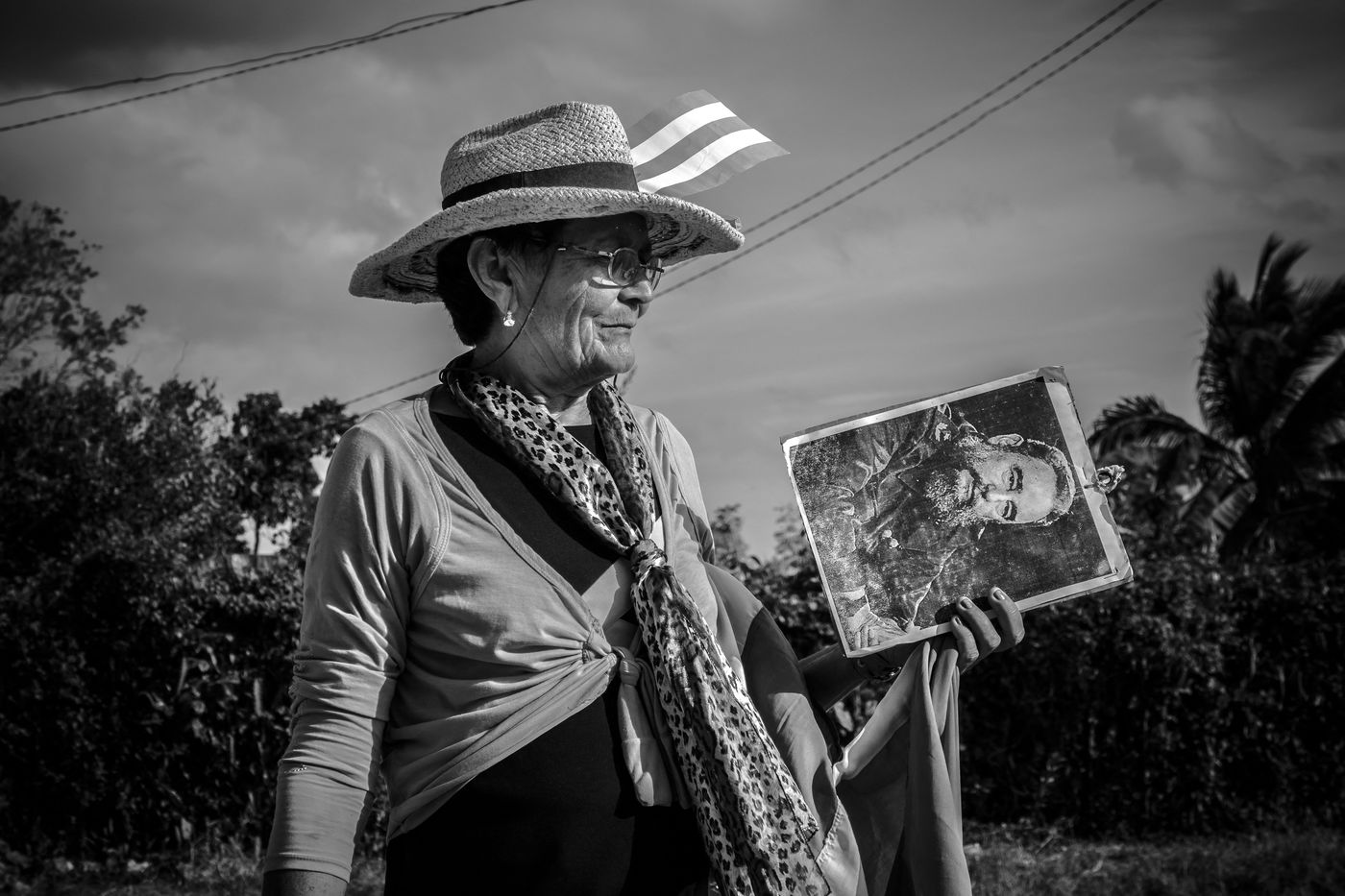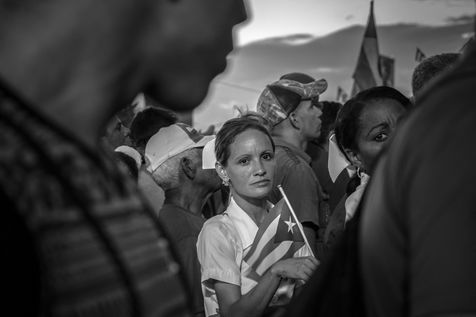Funeral of Fidel Castro
During four days and at the end of a nine-day national mourning, the population of Cuba is massing on the roads between Havana and Santiago to witness the passage of the funeral procession of Fidel Castro, the Commander-in-Chief of the Cuban Revolution deceased on November 25, 2016. The procession will cross thirteen of the fifteen provinces of the island; it borrows symbolically the reverse path that led the Caravan of Liberty to Havana, where the Castro forces took power on January 8, 1959 with Camilo Cienfuegos and Che Guevara.
Friday, December 2, 2016, near the city of Holguin, 150 km from Santiago de Cuba and the cemetery Santa Ifigenia, ultimate home of Fidel Castro. On the Carretera Central, which crosses the country from east to west, from the province of Pinar del Rio to that of Guantanamo, the crowd is made up of soldiers, civilians (mostly elders) and children from all schools on the island, mobilized for the occasion. Their cries and the songs in memory of Lider Maximo (Yo soy Fidel!, Viva Fidel!) Compose the soundtrack of the long procession.
After endless hours of waiting, the official column finally appears, overflown by an old Russian helicopter. It includes various military vehicles, including a van, ambulance, bus, old Lada, new Hyundai and police motorcycles. In the middle of this motley parade, the ashes of Fidel appear on a trailer pulled by a Jeep, under a glass bell surrounded by flowers. Long hours to wait for a few seconds of inclination, then the Cuban people leave the scene aboard old trucks made available for the occasion.
Saturday, December 3, 2016, Revolution Square in Santiago de Cuba. Several hundred thousand people gathered to pay a last tribute to the historic leader of the Revolution in the presence of dignitaries mainly from South America, including Dilma Roussef and Lula Da Silva of Brazil, Bolivian President Evo Morales, Daniel Ortega from Nicaragua, as well as former Argentina soccer star Diego Maradona. During the ceremony, Raùl Castro, visibly tired, salutes the memory of his brother and swears fidelity to his people and to socialism.
At the announcement of the death of Castro, the Cuban authorities decreed a nine-day national mourning. During this period, music, shows and the sale of alcohol were banned throughout the country. The youth of Santiago, numerous at the rally of the Place de la Revolution, lends itself well to patriotic exercise, although it seems to have already passed to something else. While the non-alcoholic beer sold on site reminds all of the good performance required by the event, the singing and future-oriented youth greet her old chef tearfully.
Sunday, December 4, 2016, 7 am, near the Santa Ifigenia cemetery in Santiago. An astonishing police service blocks the road to the cemetery where Fidel Castro will be buried in intimacy. Young Cubans, with a combative and almost intimidating attitude, have come to remind us that they will take care of the revolutionary legacy at all costs. Not far away, a small group of men from Moscow, nostalgic of the great USSR, waved the CCCP flag; their threatening appearance testifies to the fact that Vladimir Putin's Russia is still watching over the good order of things in Cuba.

















































